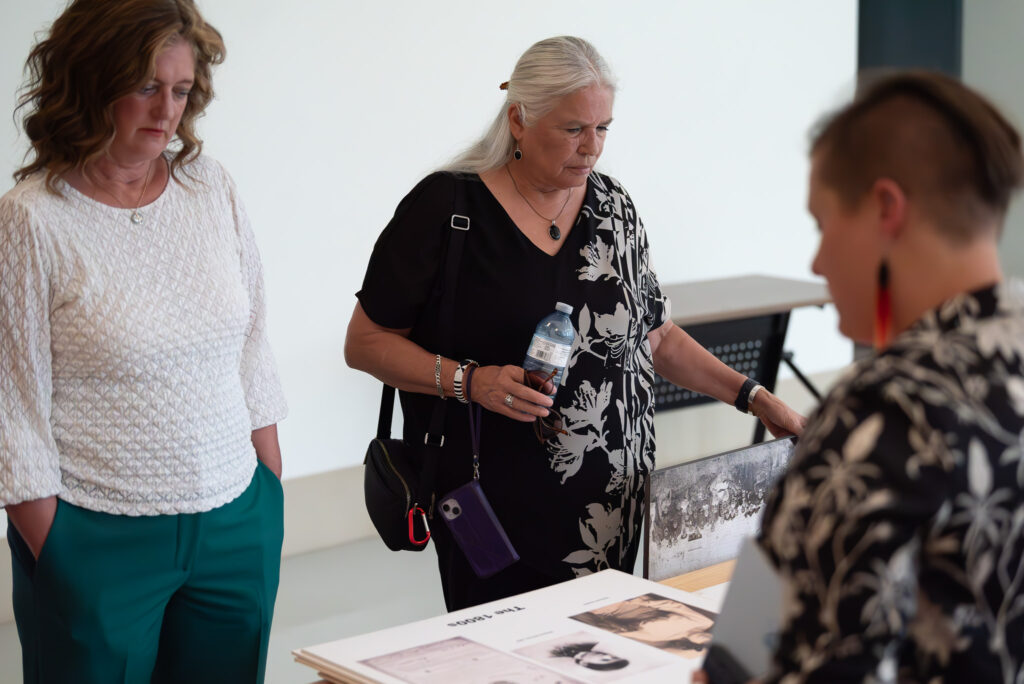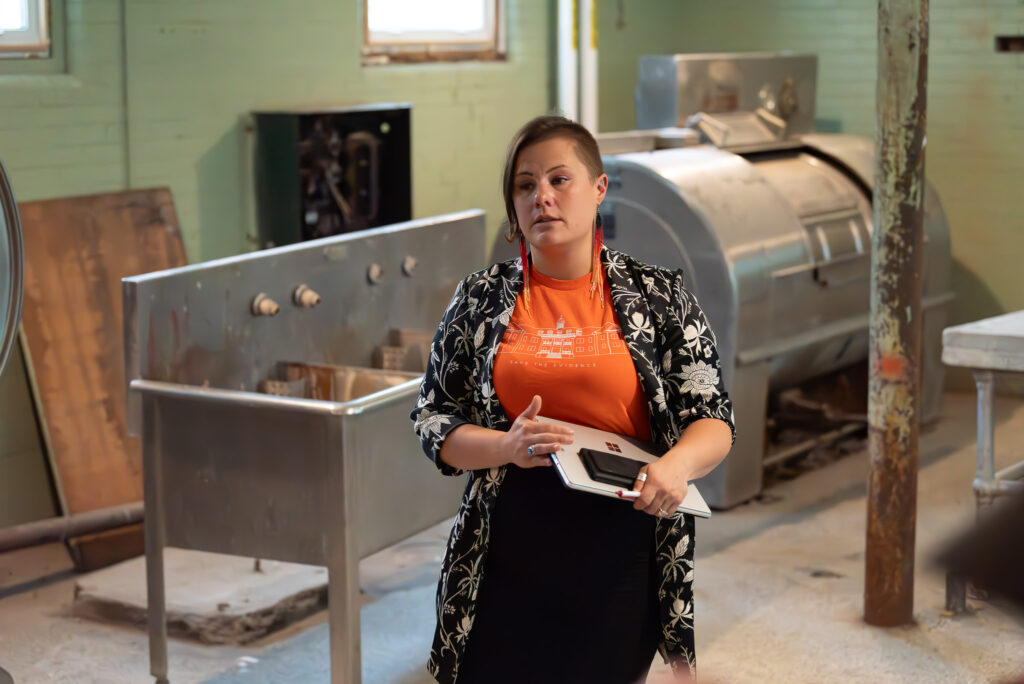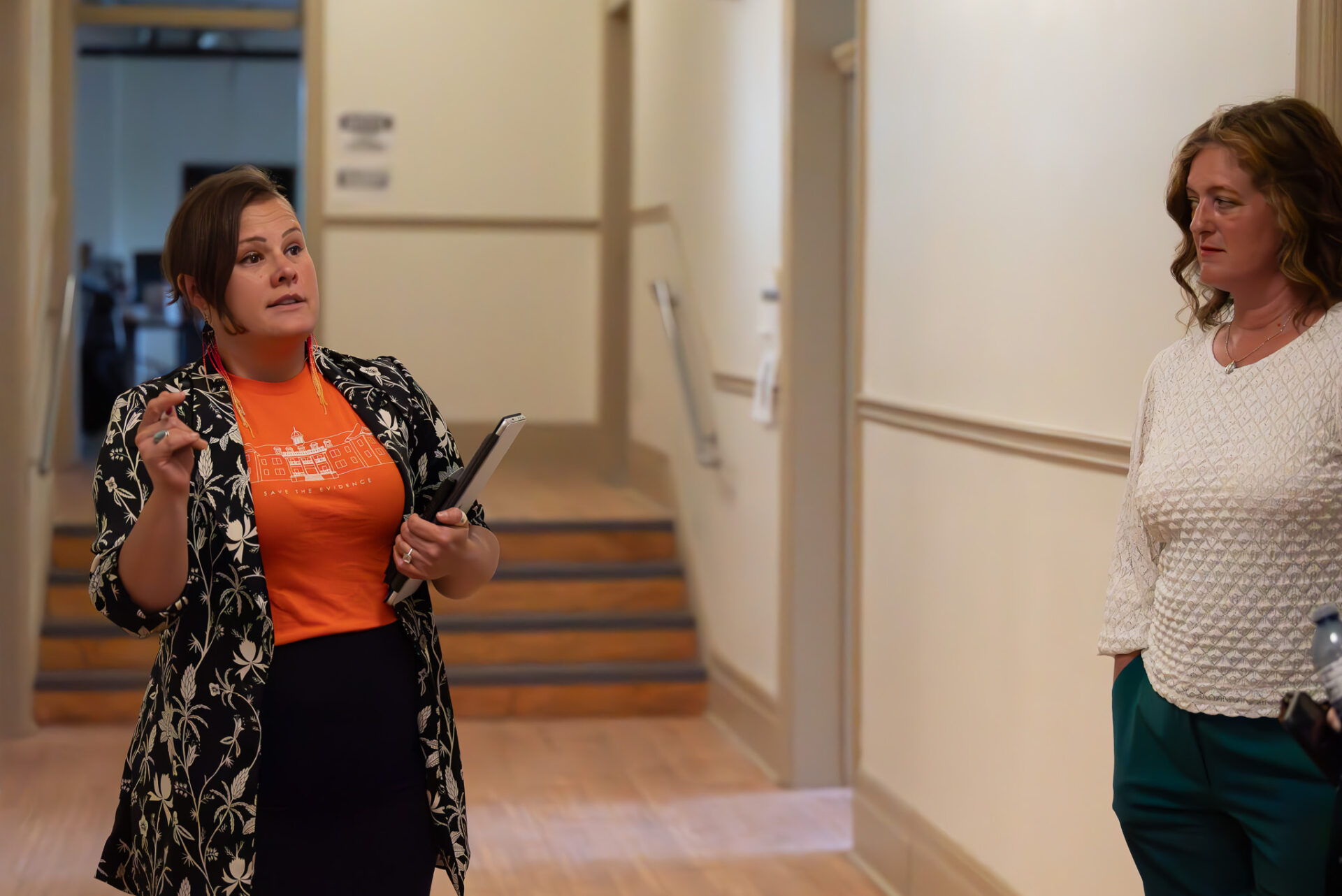Lisa Hepfner, MP for Hamilton Mountain, visited Brantford’s Woodland Cultural Centre to announce, on behalf of the Honourable Pascale St-Onge, Minister of Canadian Heritage, that the organization will be receiving more than $1.4 million in funding for its “Save the Evidence” project during a press conference on Wednesday, July 3, 2024.
“The federal government has been hugely invested in helping the Woodland Cultural Centre and the former Mohawk Institute Residential School to realize their dreams of really becoming a place for survivors to tell their stories and for visitors, and Canadians in general, to understand what happened here in the past,” said Hepfner. “Today’s specific announcement was under the Department of Canadian Heritage, and we have $1.4 million being invested in a couple of different ways through the Cultural Spaces Fund. Most of the funding, about $1.3 million, will be used for the ‘Save the Evidence’ campaign in order to support the permanent displays inside the Mohawk Institute and make it more interactive so that people can really understand the significance of the halls they’re standing and what happened here.”

The “Save the Evidence” campaign was first started in 2015 as a way to raise awareness and support after an overwhelming number of community members and survivors voted to repair the former Mohawk Institute Residential School (open from 1828 to 1970).
The survivors were consulted and the overwhelming majority wanted it saved,” said Ava Hill, former elected Chief for Six Nations of the Grand River. “There were actually some that wanted it torn down because of what had happened to them there but the majority said to save the evidence so that people will remember what the churches and the governments did to our kids for over 150 years in this country, and to make sure it never happens again.”
After seven years of fundraising, the Woodland Cultural Centre, Canada’s largest facility managed by First Nations, finally reached its $23.5-million goal in 2022. While much of the construction has been completed, the centre still requires funding to complete the project and to maintain the building well into the future.
Heather George, Executive Director of the Woodland Cultural Centre said that the former institute will soon feature audio listening stations with stories from actual survivors, historical photos, quotes embedded into the walls and several pieces of recreated furniture, historical context, and a reflection room as well.
“The funding will be used for the final interpretive phase of our construction work on the Mohawk Institute,” said George. “We’ve fundraised up to this point to do things like all the mechanical work, drywalling, the lighting, electrical, plumbing, HVAC, and fire suppression, and now we’re at the point where we want to be able to really do justice to the stories of survivors in a really meaningful and well thought out way.”

The rest of the funding, $75,000 over three years, will come from The Canada Arts Presentation Fund, and will be used by the centre for various cultural programming and events.
“This is such a relief for us. One of the big challenges of this construction project is that during the pandemic, the cost of construction increased quite dramatically,” said George. “We thought that at the start of all of this work we had everything sorted but then as we were getting closer to this end point, the purse strings were getting really tight. We were really worried about how we were going to complete this and make sure that we have enough money to do this work while still operating as a museum and as an art gallery. Having this funding, and I think also just having the support of folks at these granting agencies and in government, shows that they see the importance of the history and sharing it with the public.”
With funding now in place, George estimates that the former Mohawk Institute should be ready and open to the public by May 2025.
